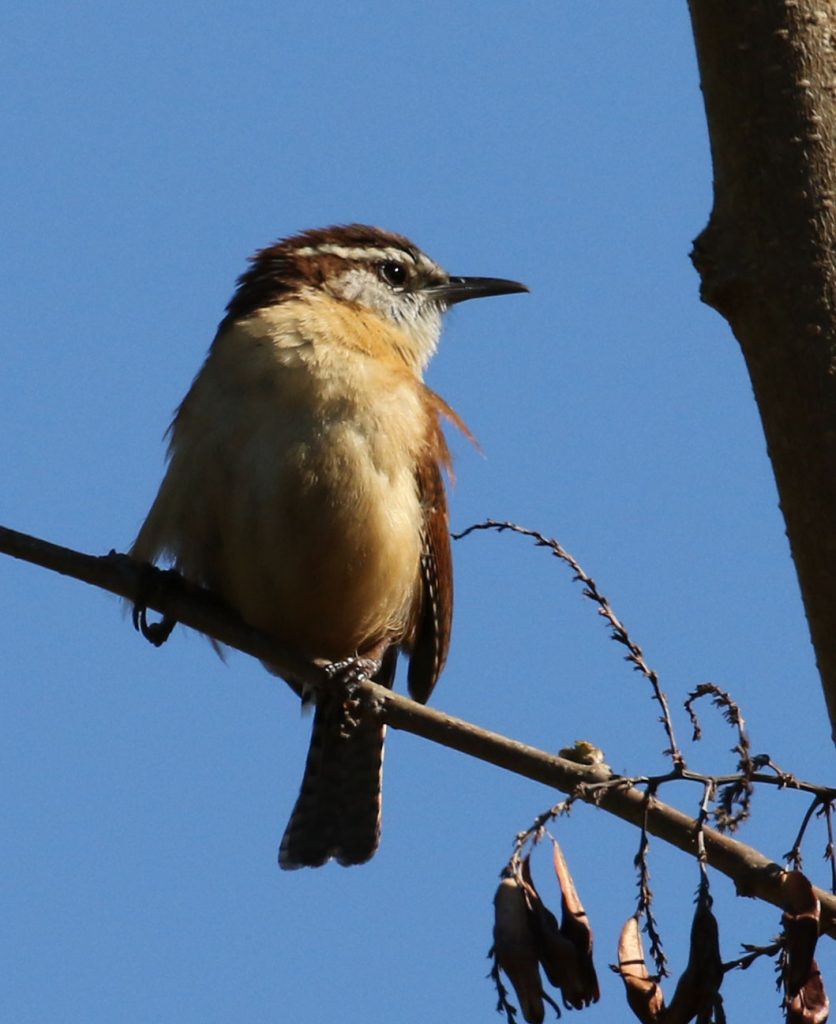Song Wars
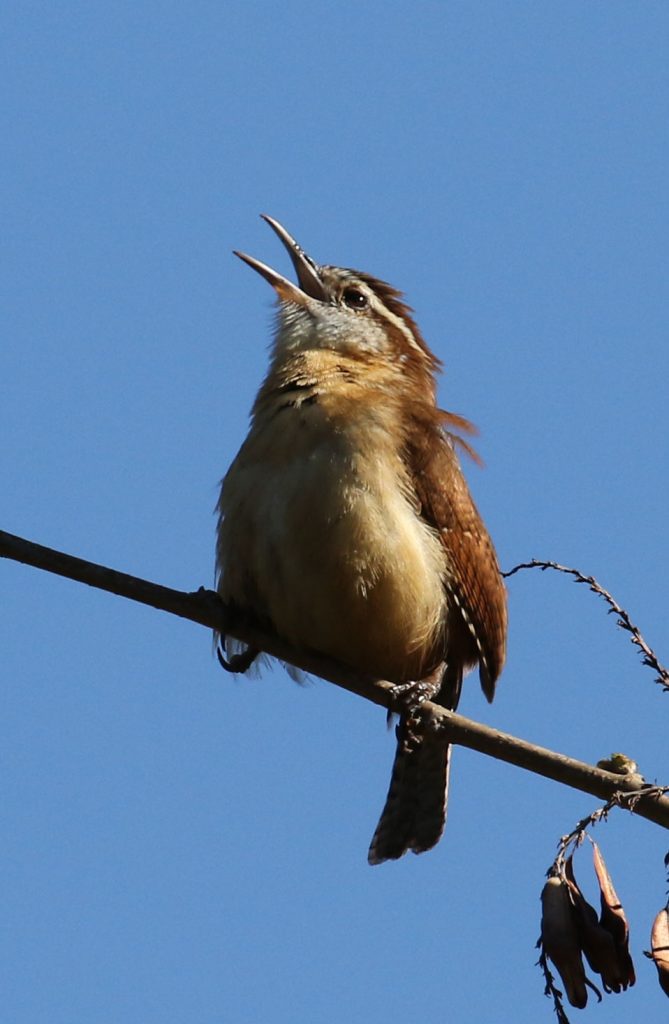
Carolina wrens are adorable, industrious and fierce. They have the lives your parents hoped for you. They mate for life, settle down on a half acre that’s theirs, and start producing kids. Lots of them. Up to three broods a year. Instead of putting a fence around their half acre, male Carolinas define the boundaries of their homestead with song. Endless, booming, lovely song.
We have several Carolina wren homesteads in our Park. One of my favorites is a few hundred feet west of the Jackson Hill Bridge on the north path. What I love about this territory is that there is another Carolina wren who has claimed the turf across the bayou. The two males spend half the day announcing themselves to one another. And breeding season doesn’t start in earnest for another two months. When that hits, the song war could be practically continuous.
You know the song of a Carolina wren. There is practically no place outdoors in Houston where you will not hear them sing. They have clear, booming voices and sing more than one song. The most commonly heard are usually represented as “cheery, cheery, cheery” and “tea-kettle, tea-kettle, tea-kettle.”
This is a recording of Carolina wrens I made last year. One of the birds sings the cheery song, the other bellows the tea-kettle song. Literature suggests that Carolinas know a variety of songs and will usually respond with a different song than is being sung at them.
They also make what are called “scolding” cries. These sound like Daffy Duck saying “whee, whee.” When the male is lustily defending the homestead, the female can sometimes be heard behind him, scolding. Scolding calls are so named because they sound guttural and harsh. But that’s not the meaning they convey. Wrens are very vocal, which makes how hard they are to see maddening. I wrote a whole blog post last year about not seeing a Carolina wren, so you will forgive the orgy of photos.
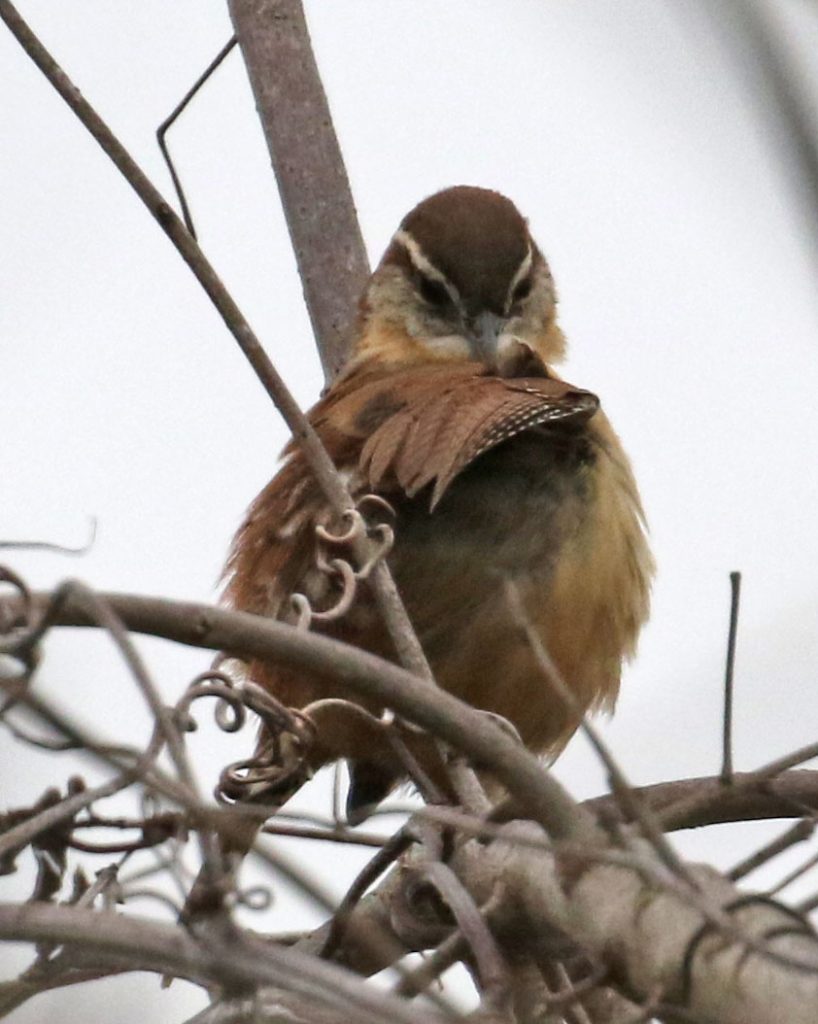
Wing maintenance is essential, even if Carolina wrens don’t do a lot of flying. They are hopping most of the time.
Carolinas are not great fliers, but that doesn’t matter because it’s not like they are going anywhere. They have a territory and they will rarely be found beyond it. All that chittering and scolding are communications between the mated pair or with their current offspring. But the song, that’s for the neighbors.
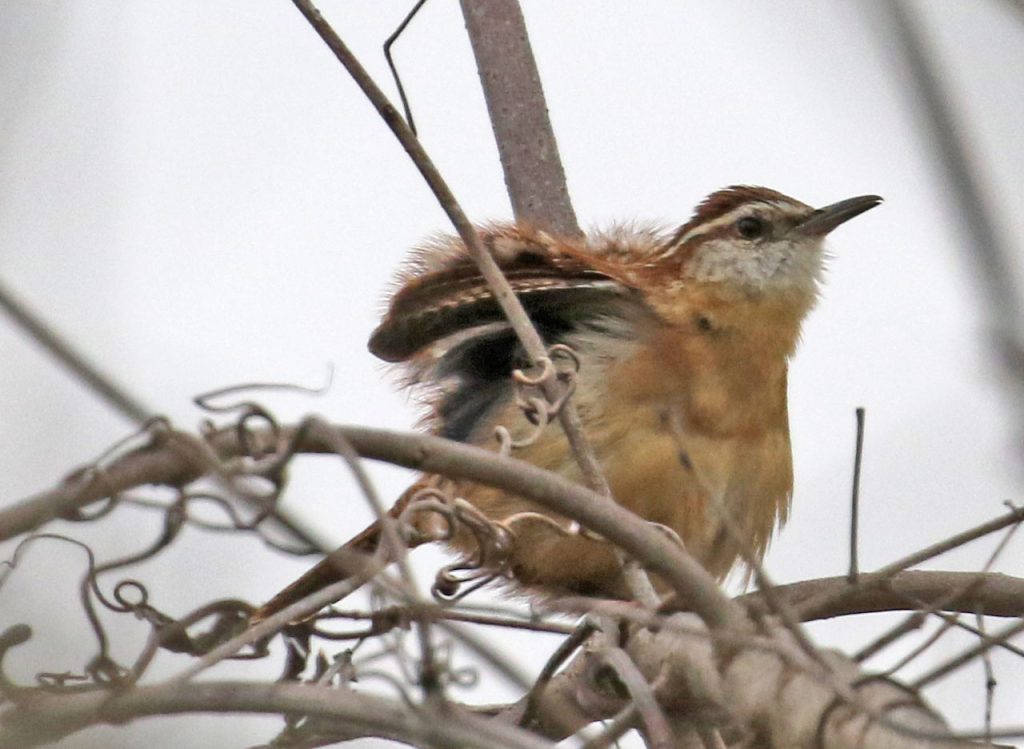
Carolinas live on crawling insects. They hop along the ground turning over leaf litter with their gently curved beaks. That curve is important because even when they are using the beak to lift litter, the sharp pointy part is still aimed at the ground so they can stab and snatch anything they turn up. They hop along on downed branches or tangled shrubbery. When the male sings (and only male birds sing in North America, regardless of the species), he does so from a low perch. No top of the tree bellowing for him. Leave that to the Cardinals. Carolina wrens make up in volume what they sometimes lack in raw acoustics.
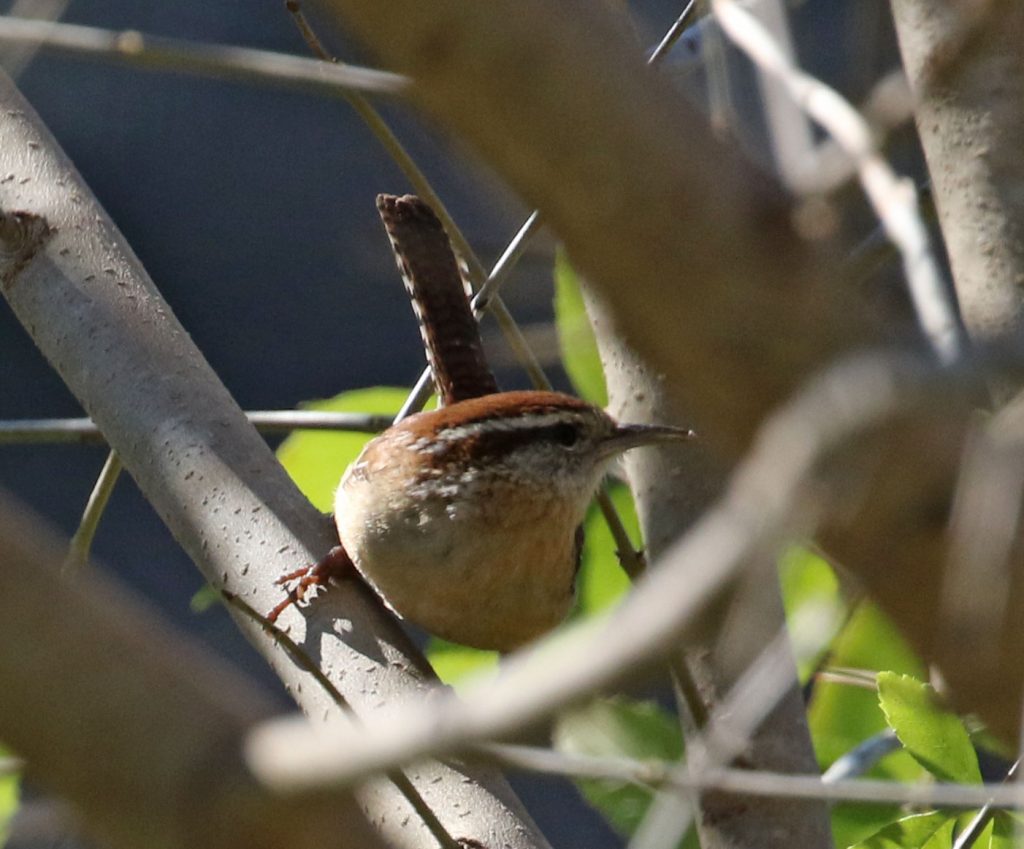
This is how you usually see a Carolina wren. In the bushes, barely visible.
It makes sense that Carolina wrens live as they do, dividing up the world into half-acre plots, each one large enough to support a pair of Carolinas. As long as everyone respects the song, it’s not a bad life.
